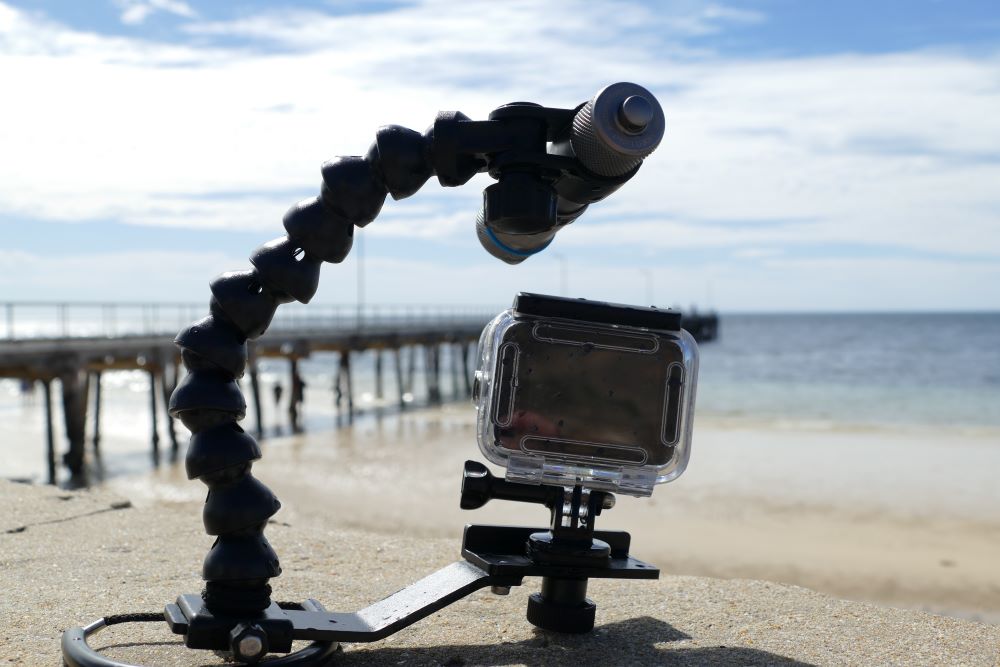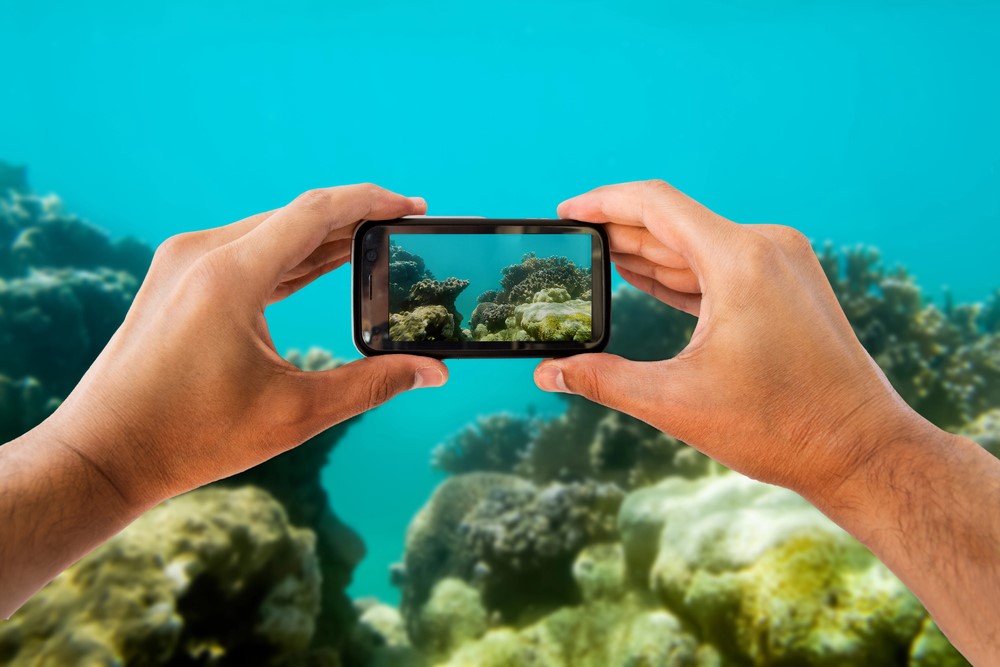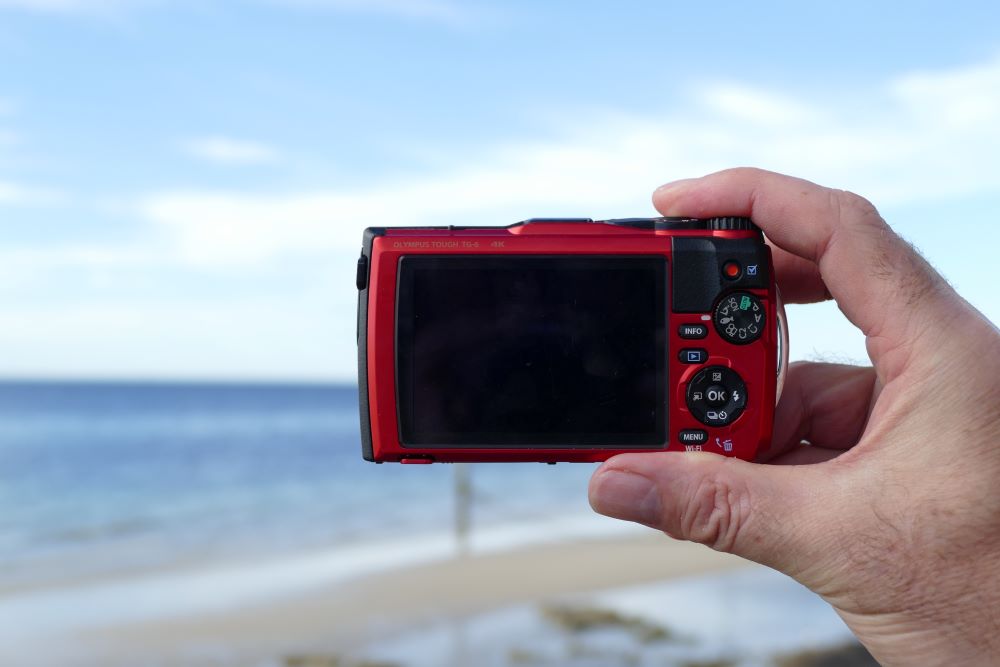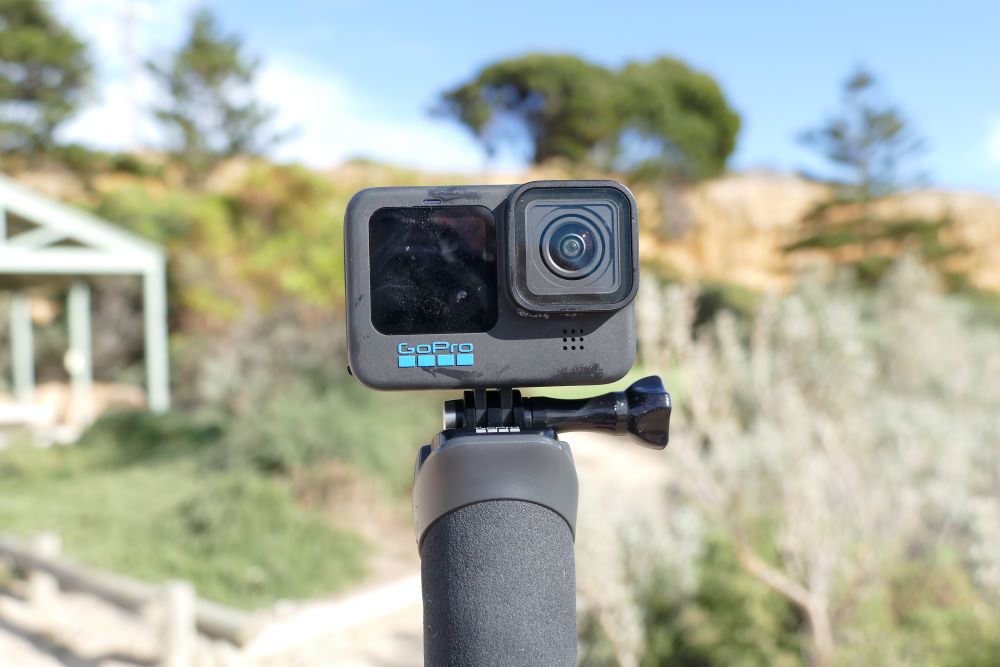Taking pictures and video has never been easier and the fun doesn’t have to stop in the water. However, underwater photography can quickly get complicated, so we have put together a simple, low tech guide to underwater camera options.
If you are a technology nerd this isn’t the guide for you, but if you want to get an idea of options for taking pictures when you snorkel, we will step you through the advantages and disadvantages of all the choices.
Disclosure: Please Note That Some Links In This Post May Be Affiliate Links, And At No Additional Cost To You, We Earn A Small Commission If You Make A Purchase. Commissions Go Toward Maintaining The Snorkel Spots Website.

Things you Need to Know & Consider
Before we jump in, it is worth having a few things in mind as you look through the different options for snorkelling cameras.
Underwater photography is tricky! Even with the best camera, taking pictures underwater is hard. The light and visibility need to be good. Fish move. Lining things up through the view finder takes practise. So whatever camera you go for, getting nice pictures takes practise and luck.
What’s your skill level and budget? When looking at underwater camera options, consider both how much money you want to spend and how much time you want to spend learning how to use your camera.
What are you using the pictures for? If you aim to publish pictures on a website or enlarge them for display, you might need better quality gear than you would for sharing your pics with friends and family.
How often are you going to be using an underwater camera? If you plan to be a regular snorkeller, you might want to invest more in a camera. For less frequent use, don’t over invest in something that takes time to master.
Many snorkel tour operators will have professional underwater photographers doing the work for you and their photo packs will probably be cheaper and better than you can take!
Postproduction – colours behave differently underwater, and most photographs, regardless of the camera it was taken on, will benefit from editing to bring out vibrancy and clarity. There are many free apps like Snapseed that will do basic corrections, or you can use powerful programs like Adobe Lightroom.
Disposable Underwater Cameras
If you want a cheap entry point to underwater photography, this is it. For less than $50 you can buy a disposable underwater camera. They use film (if you are less than 25 years old ask you parents what that is) which you take to a camera shop to be processed.
Each film takes 25 – 30 shots (or exposures), so you might want to take a couple of cameras on your next trip if you usually go photo crazy. Yes, it is a retro experience for sure! Remember what it’s like having to wait to see your pictures?
Novelty aside, if you are going on a holiday and snorkelling in shallow, well-lit water these cameras do an amazing job. The best models are the Fujifilm Quick Snap Waterproof and the Kodak Max Water and Sport. Both models are good to about 3m deep. When the film is developed you usually get paper and digital copies.
Advantages:
Super cheap option, fun to use, decent pictures in clear, well-lit water.
Disadvantages:
Finding somewhere to get the film developed, not being able to instantly see and share images, you get what you pay for – image quality is good but not dazzling, no fancy features, small view finder.

Mobile Phones
It is no secret that mobile phones have insanely good cameras, and they are always getting better.
Some phone cameras do an amazing job in low light, are good at focusing on a subject and produce vibrant images – all handy attributes for underwater photography. So, can you use them snorkelling? You can.
There are a range of watertight bags and cases for all phone models. After a bad experience kayaking, I wouldn’t use a soft bag again, but there are some good hard cases which I have more faith in.
Check out the waterproof cases from Shellbox, AxisGo and Sealife as examples. For $100 – $500 you can turn your phone into a great underwater camera – so long as you are comfortable risking the life of your phone!
Advantages:
Good value way of turning excellent phone camera into underwater cameras, hard cases will let you take your phone down to 15m or more, you can view, edit and share images as soon as you finish your snorkel.
Disadvantages:
If the case malfunctions you need a new phone, you will have to learn how to use your phone in the housing which can be a bit fiddly to start with, screen is not as touch sensitive as it is out of the case.

Waterproof Point & Shoot Compact Camera
Here you are spending $350 – $800 but you are getting a camera built to go underwater as well as being a great holiday action camera. Until recently, the two leaders in this category were the Nikon W300 and the Olympus TG series however Nikon has recently discontinued its camera – if you are quick, you might still be able to get one cheaply.
Other alternatives to the Olympus TG series are the Kodak Pixpro WPZ2, Ricoh WG-6 and Pentax WG90 which are all cheaper ($350 – $550) but have fewer features than the Olympus.
I have used the Nikon and Olympus. After not locking something properly I drowned my Nikon and now have the Olympus and really like it. The Olympus shines when it comes to macro (close up) photography.
If you are getting one of these, you would call yourself an ‘enthusiast’ who snorkels regularly. With the Olympus, your camera can grow with your interest in underwater photography with housings, lights and additional lenses you can add to your camera bag.
Advantages:
Compact size and easy to use, they are designed to be waterproof, eliminating the need for additional housing or cases. They have automatic point and press settings for underwater photography, there are extra accessories available if your interest grows.
Considerations:
If your interest in underwater photography increases a lot, you might find the lack of manual controls frustrating.

Action Cameras
Sure, there are other brands, but what we are talking about here is the GoPro. As well as the Olympus mentioned above, we also take a GoPro with us when we snorkel. They are waterproof, compact and have stacks of accessories including housings, filters, domes and handles.
One of their best features is their stabilisation technology. This is a huge plus when you are snorkelling as keeping yourself still in the water can be hard. And whenever we compare video from the GoPro and Olympus, we are always amazed how good the GoPro video is (but the Olympus wins for its stills).
Pricing is similar to an underwater compact camera but there is a huge second hand GoPro market which can help get you get into this kind of camera.
Advantages:
Compact, light, lots of accessories. Excellent stabilisation, video is great, works well in a range of lighting conditions.
Considerations:
Better at video than photos, takes some practise to use it well.
DSLR & Mirrorless Cameras
If you are serious about your underwater photography, this is where you will end up. Now that we are at the opposite end of the spectrum to disposable cameras, it is worth mentioning again – you get what you pay for. At this level, expect to have no trouble spending $5000 – $15,000 or more.
Mirrorless cameras, and the DSLRs that they have all but replaced, are for serious hobbyist and professional photographers. They are bulky setups but can produce beautiful pictures.
They have a wide range of interchangeable lenses, manual controls and extensive features. Their superior ability to collect light – which is what becomes the image – means they take higher quality pictures.
But none of this comes cheap. Theses cameras aren’t waterproof so need housings and a variety of other accessories to let them work underwater. Cameras can cost $2000 – $4000 and the housings can cost that again, plus lenses, filters, lights… Your budget will need to be in the thousands.
Advantages:
Exceptional image quality, a range of lenses for macro and wide angle shots, highly customisable settings.
Disadvantages:
Although mirrorless cameras are smaller than DSLRs it is still a big and awkward set up for snorkelling, expensive to get into (DSLRs are cheaper as they are being replaced by mirrorless models), lots to learn about the camera and how to use it underwater.
Tips for Snorkelling Photography
- Familiarize yourself with the camera’s controls and settings before entering the water.
- Practice buoyancy control to avoid disturbing marine life and surrounding environment while capturing images.
- Experiment with different shooting angles and perspectives to add variety to your underwater photography.
- Practise respect when interacting with marine life, by remaining calm and keeping a sensible distance. The more you do this, the more likely you are to have a quality interaction which leads to a better capture.
- Consider contributing your images to citizen science projects. The underwater world is vast, and scientists often rely on recreational images to monitor the health of an ecosystem and its inhabitants. Rare sightings are highly valuable information.
- Consider researching the site prior snorkelling as the time of day, cloud cover, tidal movement and recent weather conditions will all play apart in creating conditions ideal for underwater photography.
- Be patient – underwater photography is a mixture of luck and practise.
- Play with your pictures in post-production apps/software for the best results.
- Beginners Guide to Underwater Cameras for Snorkelling - February 14, 2024

